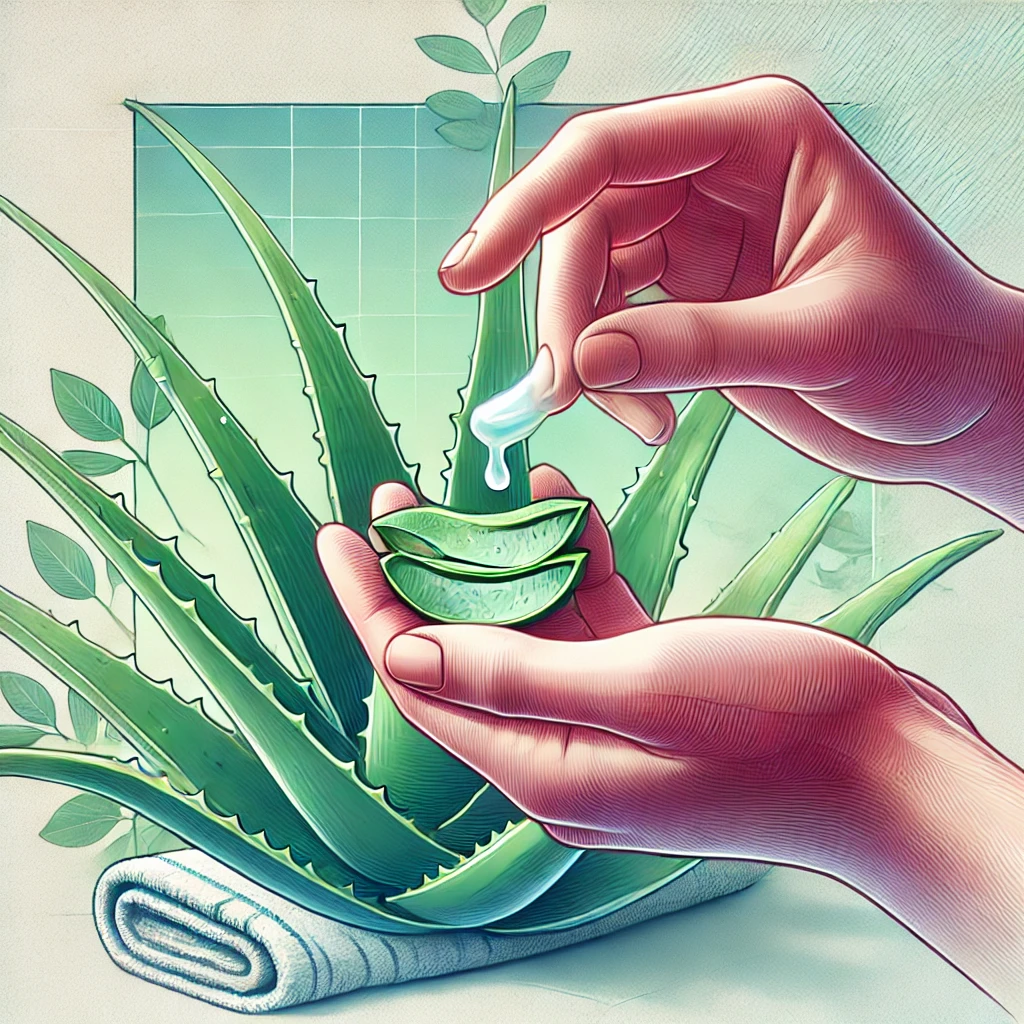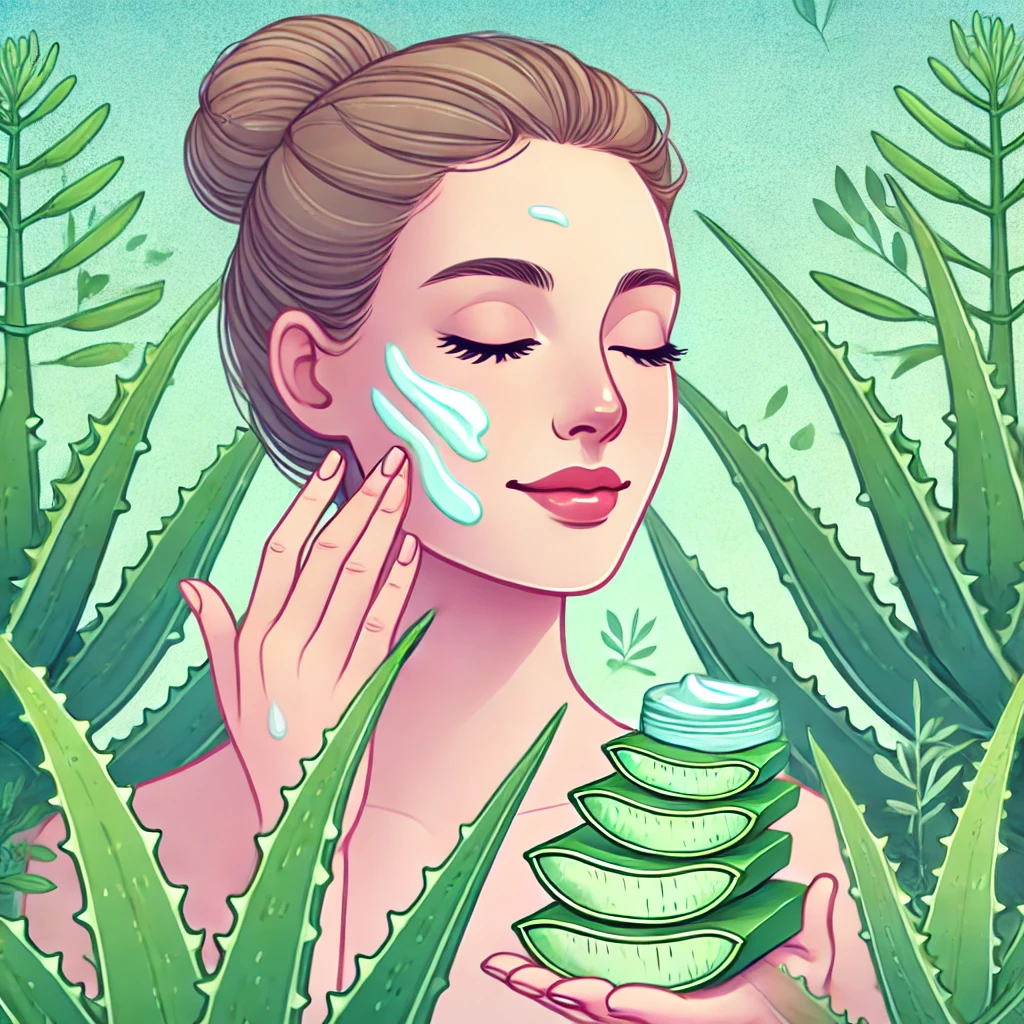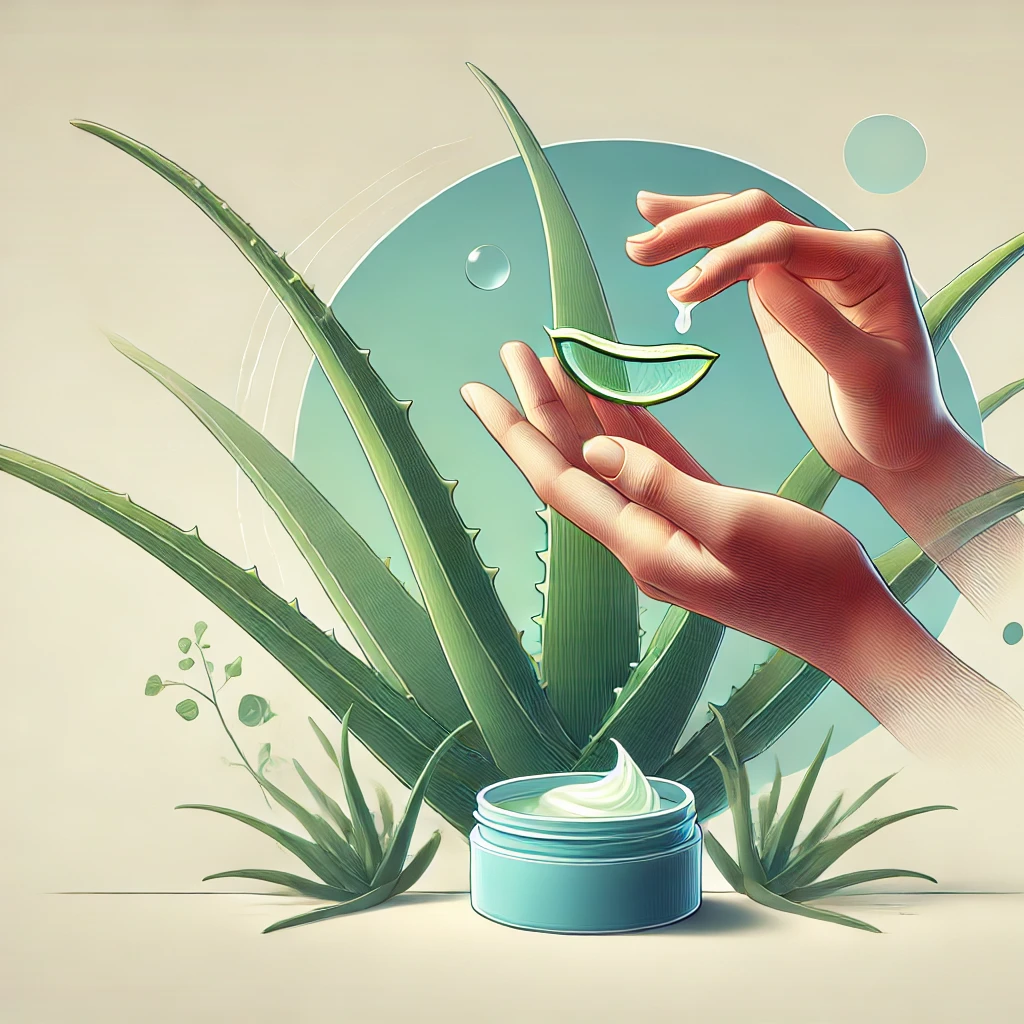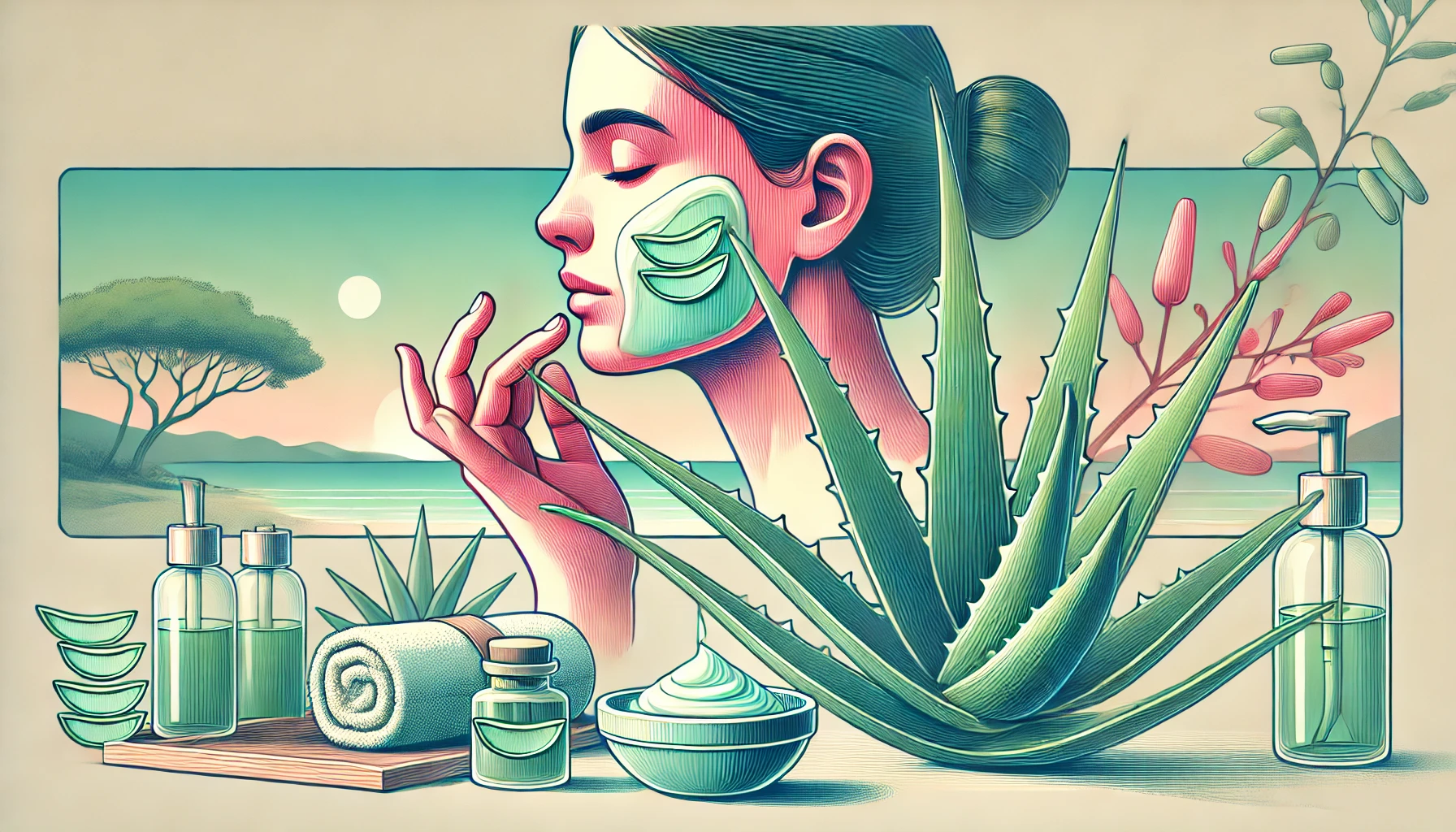How Aloe Vera Can Benefit Your Skin and Face
Given how sensitive facial skin can be, many people worry whether it’s safe to use aloe vera on the face. The good news? With proper use, addressing everything from minor burns to dry skin and inflammatory acne, this natural wonder can offer numerous aloe skin benefits. Below, we’ll explore the various ways aloe vera for the skin can enhance your skincare routine and help relieve common skin concerns.
Aloe vera has long been celebrated as one of the most versatile herbal remedies for skin conditions, thanks to its impressive healing and nourishing abilities. Whether you’re dealing with sunburns, lacerations, or chronic skin conditions such as eczema, this powerful gel could be your skin’s best friend. Here’s everything you need to know about aloe vera’s benefits for the face and body.
The Aloe Vera Plant vs. Store-Bought Gel
Aloe vera, the succulent plant known for its soothing and healing properties, is commonly used in over-the-counter (OTC) gels. There are around 420 species of aloe, but the most beneficial for skin care is Aloe Barbadensis Miller, which is the most commonly used variety in skin care products.
When you apply aloe vera to the skin directly from the plant, you’re using the purest form of its gel. This gel contains the highest concentration of the plant’s healing properties and is found inside the thick leaves. While you can break the leaves apart and extract the gel yourself, most find it far more convenient to use pre-packaged OTC products, which are formulated to work immediately. These ready-to-use gels often contain other skin-friendly ingredients such as echinacea and marigold to boost the soothing effect.

Healing Benefits of Aloe Vera for Skin
Aloe vera is famous for addressing several common skin problems. Below, we’ll look at how this botanical marvel can work for you in various scenarios. We’ll also explore the skin benefits of aloe in detail.
1. Burns
For minor burns, Aloe Vera can provide quick relief and help the skin to heal quicker. Apply directly to the affected area up to three times daily. Cover the burn with a gauze bandage to prevent further irritation if there is any need for protection.
2. Sunburn
If you’ve spent too much time in the sun and now have an uncomfortable burn on your face, aloe vera for the face can be a lifesaver. While research has shown that it can help soothe a sunburn, it’s important to note that it’s not an effective way to prevent sunburn. Always use sunscreen to protect your skin from harmful UV rays.
3. Small Abrasions
Whether you’ve scraped your chin, your forehead, or any other part of your body, the cooling and anti-inflammatory properties of aloe vera can provide quick relief. The gel helps to soothe the pain and reduce the burning sensation. Apply to the injured area three times a day.
4. Minor Cuts
Instead of reaching for traditional antibiotic ointments, consider aloe vera for skin as a natural alternative for the treatment of small cuts. By stimulating collagen production and fighting bacteria, aloe’s molecular structure promotes wound healing and reduces the risk of scarring. You can apply it to minor cuts up to three times a day to help them heal quicker.
5. Dry Skin
One of aloe vera’s magical skin aspects is how easily it absorbs, making it ideal for both oily and dry complexions. Aloe’s moisturizing properties lock in moisture without clogging pores. To keep your skin soft and supple, try swapping your regular moisturizer for aloe vera gel after a bath.

6. Frostbite
While frostbite is a serious condition that is in need of immediate medical attention, aloe vera has historically been used as a remedy for its painful symptoms. However, to make sure it’s appropriate for your treatment plan, always consult your doctor before using aloe in such cases.
7. Cold Sores
Cold sores appear on the outside of the lips and are caused by the herpes simplex virus. Aloe vera can be helpful in the treatment of these sores by targeting the virus at the root of the problem. For the best results, apply a small amount of the gel to the cold sore twice a day.
8. Eczema
For those who suffer from eczema, the soothing, moisturizing properties of aloe are a welcome relief. The gel can moisturize and soothe the dry, itchy patches that characterize the condition. It’s also effective for seborrhoeic dermatitis. This is a form of eczema that primarily affects the scalp, but can also appear on the face and behind the ears.
9. Psoriasis
Just as with eczema, aloe vera for the skin can help to relieve the discomfort associated with psoriasis. Aloe vera helps reduce inflammation and itching and offers a natural way to deal with flare-ups. For best results, apply the gel to the affected areas twice a day.
10. Inflammatory Acne
If you struggle with the inflammatory types of acne, such as pustules and nodules, aloe vera for the face may be a natural remedy that is worth considering. Its anti-inflammatory properties have a soothing effect on redness and swelling. Apply the gel directly to the blemish with a cotton wool pad up to three times a day for targeted treatment.

How to Use Aloe Vera on Face and What to Look for
The gel found in the plant’s leaves is the purest and most potent form of aloe vera. If you have an aloe plant in your home, you can break off one of the leaves and squeeze the gel out of it directly onto your skin. This method is considered to be the best option if you’re looking to learn how to use aloe vera on your face in its most natural form.
When you are shopping for an aloe vera gel, it’s important to choose a product that lists aloe vera as the main ingredient. Some aloe-based products may be watered down or contain unnecessary additives. This can reduce the benefits. If you have skin problems, avoid using aloe vera extracts as they do not provide the full moisturising benefits of the gel itself.
Side Effects and Precautions
While aloe vera is generally safe for use on the skin when applied as directed, it’s important to know that the FDA does not regulate these products. Therefore, it’s up to you to make sure you’re using aloe safely and to report any adverse reactions to your healthcare provider.
If you have a large wound or severe burn, it’s best to avoid using aloe vera. Some research suggests that aloe may slow down the skin’s natural healing process in these cases. Stop using it immediately if you experience any unusual side effects such as itching, burning or a rash. These could be signs of an allergic reaction.
Finally, don’t apply aloe vera gel to an infected wound. Although the gel does have some anti-microbial properties, it could create a protective barrier that could trap bacteria in the gel and make the infection worse.
Final Thoughts
From soothing burns to treating inflammatory acne, aloe vera remains a popular natural remedy for a wide range of skin problems. However, it’s always best to consult your dermatologist if you have chronic skin conditions or are unsure if aloe is right for you. Remember that store-bought aloe gels are not the same as using the plant itself. So choose wisely and look for products that contain high concentrations of pure aloe.
If you’re interested in finding out how to use aloe vera on your face and your skin doesn’t improve within a few days of using it, or if your symptoms get worse, seek medical advice to treat any underlying skin conditions. The health of your skin is always worth prioritizing.


